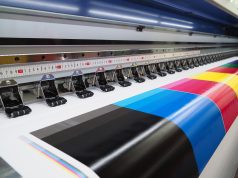In modern times the use of micro coils has increased excessively in the medical industry. Micro coils are extremely small and thin electromagnetic coils that have wide use in various critical medical devices including implantable devices, monitoring devices, sensors and various others. The process of preparing electromagnetic coils is really interesting. In this article, I am going to give you an overview of this process and also let you know the challenges the creators face while preparing the micro coils. So let’s get into this.
What is Coil Winding?
Coil winding is the process of winding or twisting a wire around a core material or itself in a helical or spiral shape to create electromagnetic coils. The dimension and the shape of the coil largely depend on the purpose of the devices within which the designers will set the coils. However, there are some parameters based on which the creators design the coils such as strength and resistance. The process of coil winding requires high expertise and precision or it can not achieve the desired performance and reliability.
The Machines Used for Coil Winding
Coild winding can be done by hand or through machines. However, at current times there is an increasing demand for electromagnetic coils and micro coils winding them through hand is a bit impractical. Therefore, the creators mainly depend on automated machines for large-scale production of these coils. Based on the type and shape of the wound coils, coil winding can be of different types and they are ortho-cyclic, helical and jumble. For creating the helical coils, the machines switch directions and create layers by moving forward and backward. However, the layers have certain limits and after racing this layer number limit, the structure becomes excessively tight, especially with the fine wires.
The process of ortho-cyclic winding on the other hand is more efficient. In this method, the creators place the upper layer wire in the lower-level grooves of wires. This process is more precise than the helical winding process. The end product is also of higher quality as they have a higher electromagnetic field strength and better heat conduction.
The Method of Winding Coils
Now for the winding process, the creators make sure that the coils do not touch themselves at the time of winding around a core object. They first isolate the coil with insulation and then twirl or wind it around a core pin-type material. This process creates electromagnetic induction which is a necessary requirement for preparing the micro coils. As for the materials, copper is the most popular choice for this type of winding practice. However, these copper coils contain insulated wires.
Challenges of Coil Winding
The creators and the designers face various challenges during the process of coil winding. Firstly, handling of the wire can be tricky, especially for the ultra-fine wires. It is necessary to properly control the tension to avoid tangling and breakage. During coil winding, proper alignment with the core material is extremely necessary. Misalignment can hugely affect the performance of the coils. High speed and complex shapes of wires are other difficulties that the designers need to deal with.









